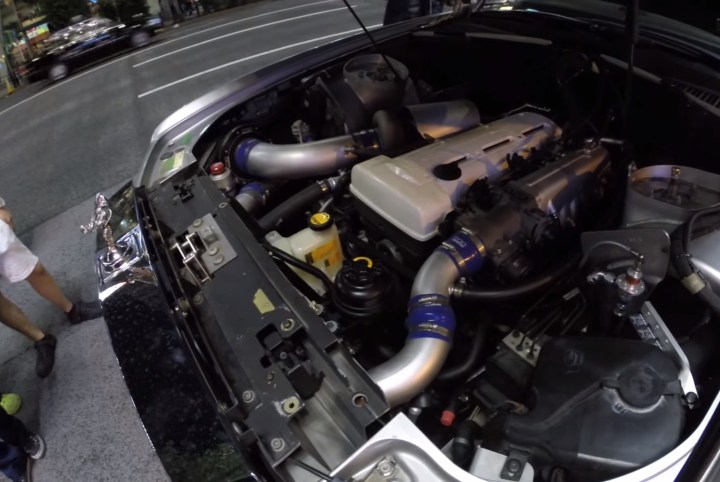
Enthusiast website Engine Swap Depot reports the car lived the laid-back life of the average Rolls-Royce until the engine lost its coolant about a year ago. It overheated and instantly became a big, expensive boat anchor incapable of generating any kind of forward motion. It’s probably not the first time a Phantom has blown an engine, but this car’s owner decided against rebuilding it for reasons that remain a little vague. It sounds like the total cost of a new engine was eye-wateringly expensive – we’re probably talking brand-new compact car money — and parts aren’t exactly easy to come by.
It’d be a shame to scrap, crush, and recycle such a beautiful car after an engine failure, right? The owner also resisted the intense temptation of stuffing it in a damp chicken coop for 40 years and selling it during Monterey Car Week in 2057. He instead set out to swap in a turbocharged straight-six from none other than a Toyota Supra.
The Supra’s 2JZ six is one of the most tuner-friendly engines on the planet, and the unit under the Rolls’ ultra-long hood wasn’t spared. It’s equipped with strengthened internal components, a large turbocharger, and a supercharger. It now generates 600 horsepower in its most basic state of tune, or up to 900 horsepower by turning up the boost. It sends its power to the rear wheels via an automatic transmission.
Extra gauges mounted right in front of the stock Rolls-Royce unit lets the driver keep an eye on what’s going on under the hood, which will hopefully prevent a second catastrophic engine failure. The rest of the car is mostly stock.
The swap required a lot of work, like these projects often do, but at least fitting the six-cylinder engine in the Rolls’ cavernous engine bay was probably a relatively straightforward operation.



